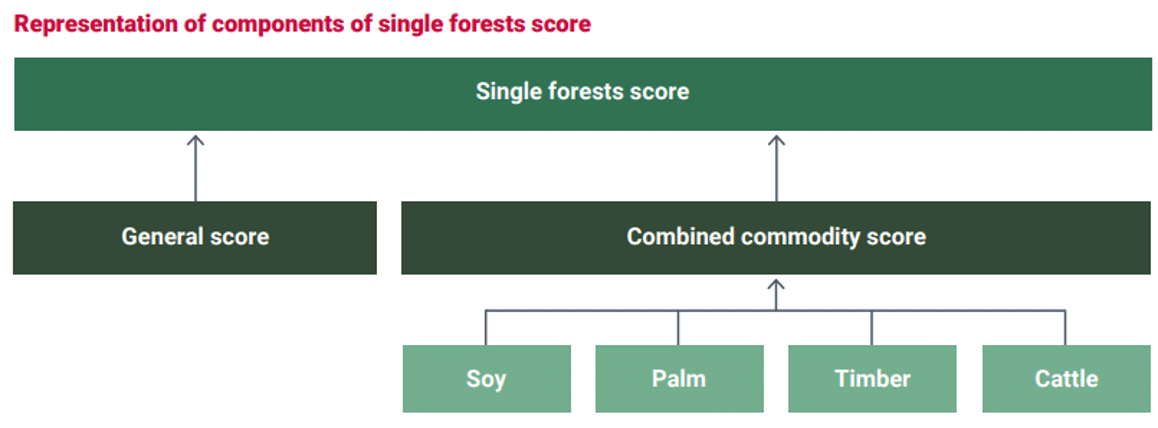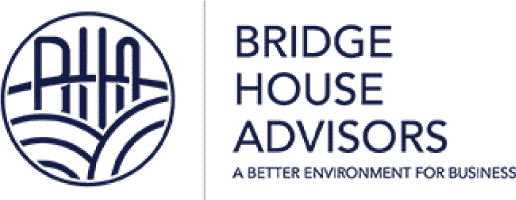Welcome to our update on the second installment of Bridge House Advisors’ Blog Series where we cover the “alphabet soup” of major standards, frameworks, and disclosure systems that affect and influence ESG and sustainability efforts for our clients. In this series, we will provide a basic overview of the standard or framework and the value they provide. We will also cover how Bridge House works with our clients in applying or supporting these frameworks into their ESG management programs. Lastly, we will cover any trends or changes that could impact how our clients apply these frameworks to their ESG and sustainability efforts.
Next Up…CDP1 (formerly the Carbon Disclosure Project) – yes that is a bit of a music reference.
What is CDP and who is it for?
Established in 2000, CDP’s vision is “to see a thriving economy that works for people and planet in the long term.” As an international non-profit organization, CDP has historically provided general and sector-specific questionnaires for Climate Change, Water Security, and Forests, where companies, cities, states, regions, and public authorities can disclose their environmental impact. As well as meeting investor and customer demands, reporting environmental data through CDP enables companies to protect and improve their reputation, boost their competitive advantage, uncover risks and opportunities, and track and benchmark progress. In a world where mandatory disclosure is gaining momentum, disclosing through CDP also helps companies get ahead of regulation. In 2021, CDP launched a new strategy that expanded its horizons further to cover all planetary boundaries. These areas include biodiversity, plastics, and oceans, as well as the interconnectedness of nature and earth’s systems.
Bridge House frequently works with corporate clients that are completing one or multiple questionnaires (now “themes” in the new integrated questionnaire), depending on their business, often in response to a customer request. The company’s response is shared with the requesting customer and can also be shared publicly if the company has chosen to do so. Customers use this information to update their sustainability programs and goals, whereas investors use the data to make informed investment decisions around a sustainable economy. Historically, CDP has released their new questionnaires in January to allow companies to begin the process for responding, opening their response portal in April, with final submissions due by end of July or September depending upon whether the company wants to receive a score from CDP based upon the disclosed information. However, with the shifted timeline for the 2024 reporting season, there is the potential for CDP to permanently change the timeline for future reporting. We will know more during the 2025 reporting season.
Why is CDP important?
CDP is the world’s most widely used database of environmental information. In 2023, more than 23,000 companies disclosed their environmental data, a 24% increase from 2022, in response to requests from one or more of the 746 institutional investors and over 330 large corporate purchasers who use CDP to collect environmental data from their supply chain.
In addition, CDP is aligned to several sustainability frameworks in an effort to provide consistent reporting across frameworks.
CDP helps companies identify and implement corrective actions to reduce their environmental footprint, which often align with real opportunities to improve their business. Sustainable opportunities like energy and water reduction programs can have tangible bottom line benefits. Risk identification allows companies to institute or improve business continuity plans. The company’s reputation is protected and can be improved with the appropriate transparency through reporting. Lastly, companies can stay competitive by disclosing to CDP, which can also attract investors, customers, and suppliers who value sustainability and transparency.
By using CDP’s standardized framework, our clients can benchmark their performance against their peers and industry best practices (based on CDP’s A List) and prioritize the areas that need more attention. CDP provides the opportunity for a company to engage their supply chain partners and stakeholders, encouraging collaboration on solutions to address common challenges and opportunities. For example, large value chain customers (Walmart, Apple, Target) are already putting pressure on their suppliers to disclose their emissions, targets, and additional sustainability initiatives. Additionally, mandatory disclosure will continue to gain momentum as regulations continue to move forward and become the norm.
Another benefit of CDP is that it rewards companies for their environmental leadership and innovation. CDP’s A List is a prestigious ranking that showcases the top performers in each sector and region, based on their disclosure and action on climate change, water security, and deforestation. Being on the A List can provide a competitive advantage and recognition for a company’s sustainability efforts and motivates the company to continue improving their performance.
Ultimately, disclosing through CDP provides a great avenue for companies to get ahead of increasing commercial and regulatory pressures.
Bridge House & CDP
Bridge House can support clients comprehensively to develop responses, perform a mock scoring, and upload their responses, or in a more limited capacity, which can be as minimal as performing a cursory review or conducting a mock scoring. Bridge House is flexible depending on our client’s needs. For first-time responders, it may seem like an overwhelming and time-consuming process to gather all the relevant data and calculations and develop a response that meets CDP’s guidance and scoring criteria, and Bridge House can help make this easier. We work with the client to confirm scope of response required, including the relevant questions for the different “themes” being requested (see below for updates). From there, Bridge House helps the client prepare for the CDP submission by gathering the required information, supporting narrative development for individual questions, and conducting a mock score to better predict how the company may score.2 Bridge House can also support upload of the client’s response to the CDP Platform. For those that have responded previously, Bridge House can help improve their responses to optimize scoring potential for the current year, while also considering where more time and effort should be made to improve responses in the future. Bridge House also has a full Corporate Services Group that includes Sustainability Strategy & Development, Carbon Accounting, and Energy Management Programs that can address many identified risks or opportunities.
Looking Ahead
Now that the 2024 CDP reporting season is here, we have some updates to our previous post:
1. There will be a new CDP Platform available in April 2024. CDP states that this new technology platform will improve the disclosure process for responding, and consequently will aid in driving climate action.
The update: The reporting portal opened for requesters on April 16th and for disclosers on May 14th, 2024. CDP will open the official reporting window on June 4th.
2. CDP has moved to an integrated questionnaire. CDP is moving towards a singular questionnaire that encompasses questions from all three previous questionnaires (Climate Change, Water Security, and Forests) as CDP hopes to provide “an improved interface and a more intuitive workflow” while also encouraging “a shift towards holistic environmental management” that will prepare responders to face market and regulatory pressures. CDP also believes the new integrated questionnaire will help with efficiency during the reporting process, as it will largely remove the repetitive questions that were previously asked across questionnaires.
The update: The week of April 29th, CDP released their integrated questionnaire and reporting guidance on their website. The new questionnaire incorporates all three previous questionnaires (now “themes”) in addition to more involved questions/subcomponents of questions for biodiversity and plastics. CDP has yet to release a downloadable version of their new questionnaire, though we suspect they may do so the week of June 3rd to align with the official opening for the reporting window. For companies that have not seen the new questionnaire, the flow and structure has changed significantly; however, the content has largely stayed the same. That said, there are various modifications and new questions to consider, and we highly recommend starting the response development process soon.
3. The submission response window will be early June 2024 through September 2024. Unlike the previous process, it seems that CDP will allow companies a window to submit their responses, starting in early June 2024, and going through September 2024.
The update: The official reporting window opens June 4th, and companies must submit their response by September 18th to be eligible for scoring.
4. Companies will still receive separate scores for different themes. As far as scoring, companies will still receive separate scores for Climate Change, Water Security, and Forests, although there will only be one questionnaire to upload to the new CDP Platform.
The update: CDP has not released their detailed scoring guidance yet; however, in their Key Changes for 2024: Part II, they mention the following significant change to their use of “essential criteria”:
“In previous years CDP applied essential criteria in scoring to the A List only – criteria that must be met for organizations to be able to progress to the A List. In 2024, CDP is introducing an extra layer of essential criteria for climate change across scoring levels, that must be met for organizations to progress their score to the next level.”
For now, the essential criteria will be focused on governance, processes, and ambition for the climate change questions, but CDP plans to expand essential criteria across other themes in the future.
Additionally, CDP has released the following graphic to show how they plan to score the forests theme in the new questionnaire:

Please reach out to the Bridge House team if your company would like support through the 2024 reporting season. We’re eager and willing to work with existing or new clients to navigate the changes, and we’re happy to share more information related to contextual changes and our response development process.
To learn more about CDP and how it can influence your Sustainability Program, or to baseline or improve your reporting performance, contact one of our CDP Frameworks leads below.

Jessica Atar
jatar@bridgehouseadvisors.com
LinkedIn

Theresa Blackwell
Tblackwell@bridgehouseadvisors.com
LinkedIn

Cade Paul
Cpaul@bridgehouseadvisors.com
LinkedIn
2Note that Bridge House is not an official scoring partner to CDP and cannot guarantee a score.

